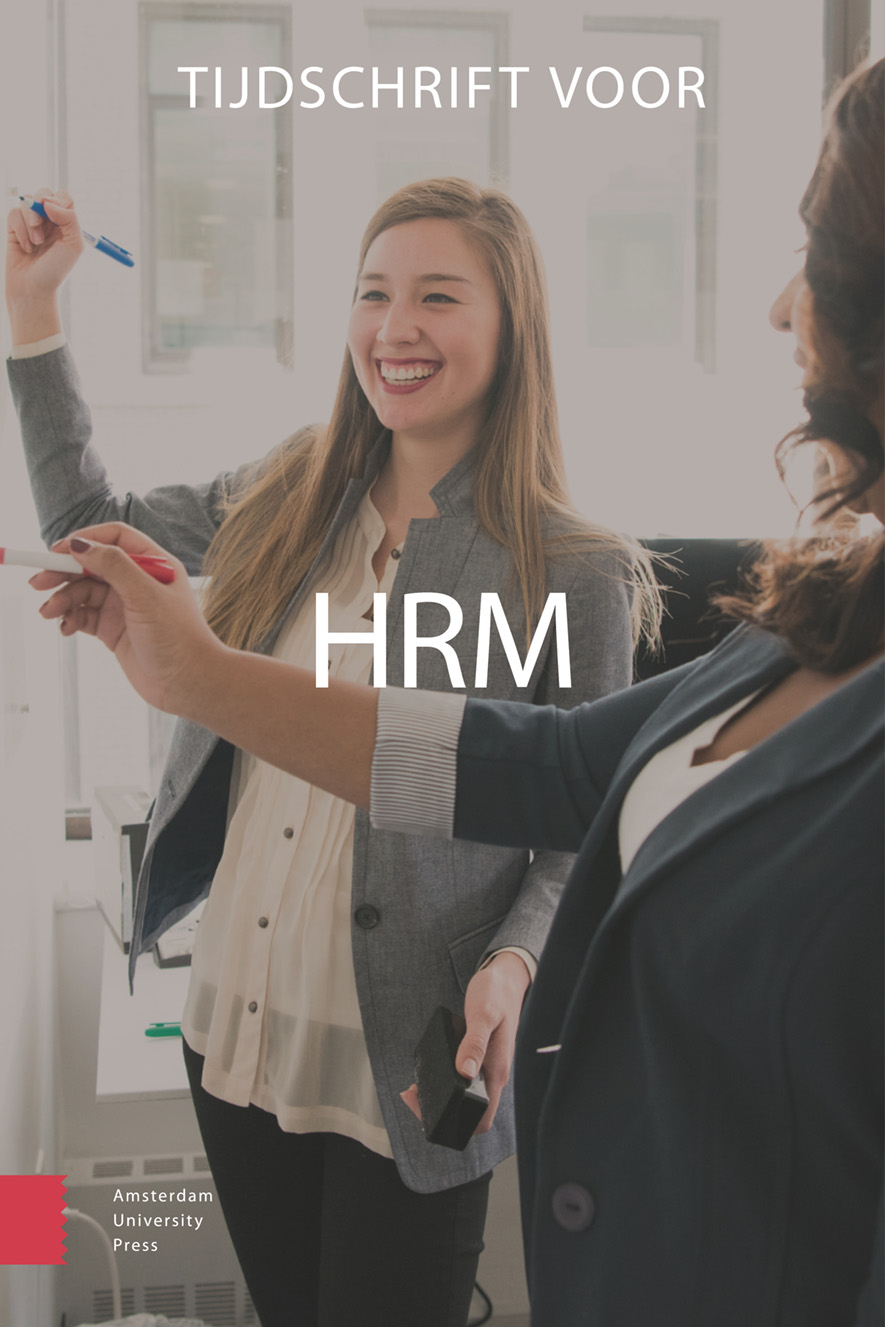-
oa Menskrachtproblematiek in de tandheelkunde
Aandacht voor duurzame inzetbaarheid
- Amsterdam University Press
- Source: Tijdschrift voor HRM, Volume 25, Issue 3, sep. 2022, p. 1 - 22
-
- 01 sep. 2022
- Vorig Artikel
- Inhoudsopgave
- Volgend Artikel
Samenvatting
Deze studie onderzoekt welke taakeisen en hulpbronnen medewerkers in de tandheelkunde ervaren en wat de relatie hiervan is met hun duurzame inzetbaarheid, op basis van het Job Demands-Resources model. De volgende onderzoeksvraag staat centraal: Welke taakeisen en hulpbronnen zijn van voorspellende waarde voor de duurzame inzetbaarheid van medewerkers in de tandheelkunde? Deze studie maakte gebruik van een mixed-methodaanpak waarbij kwalitatieve en kwantitatieve data werden verzameld. 48 medewerkers uit drie Nederlandse tandartspraktijken vulden een vragenlijst in en 11 medewerkers werkten mee aan semigestructureerde interviews. Resultaten laten zien dat naarmate medewerkers meer hulpbronnen ervaren (autonomie, taakvariatie, steun van leidinggevende en steun van collega’s) zij positiever zijn over de mate waarin zij tot hun pensioenleeftijd door willen werken. Met name steun van collega’s bleek een belangrijke hulpbron te zijn voor duurzame inzetbaarheid. In interviews noemden veel medewerkers verder het belang van goed contact met patiënten voor werkplezier. Taakeisen (werkdruk, lichamelijke belasting en emotionele belasting) hangen in het algemeen niet significant negatief samen met de mate waarin medewerkers aangeven door te kunnen werken tot hun pensioenleeftijd. Wel blijkt dat naarmate respondenten een hogere werkdruk ervaren, ze significant minder positief zijn over hun duurzame inzetbaarheid. Uit de interviews blijkt dat veel medewerkers een te hoge werkdruk ervaren wat stress en onzekerheid oplevert over of zij de pensioenleeftijd werkend zullen halen. Theoretische en praktische implicaties van dit onderzoek worden besproken.


